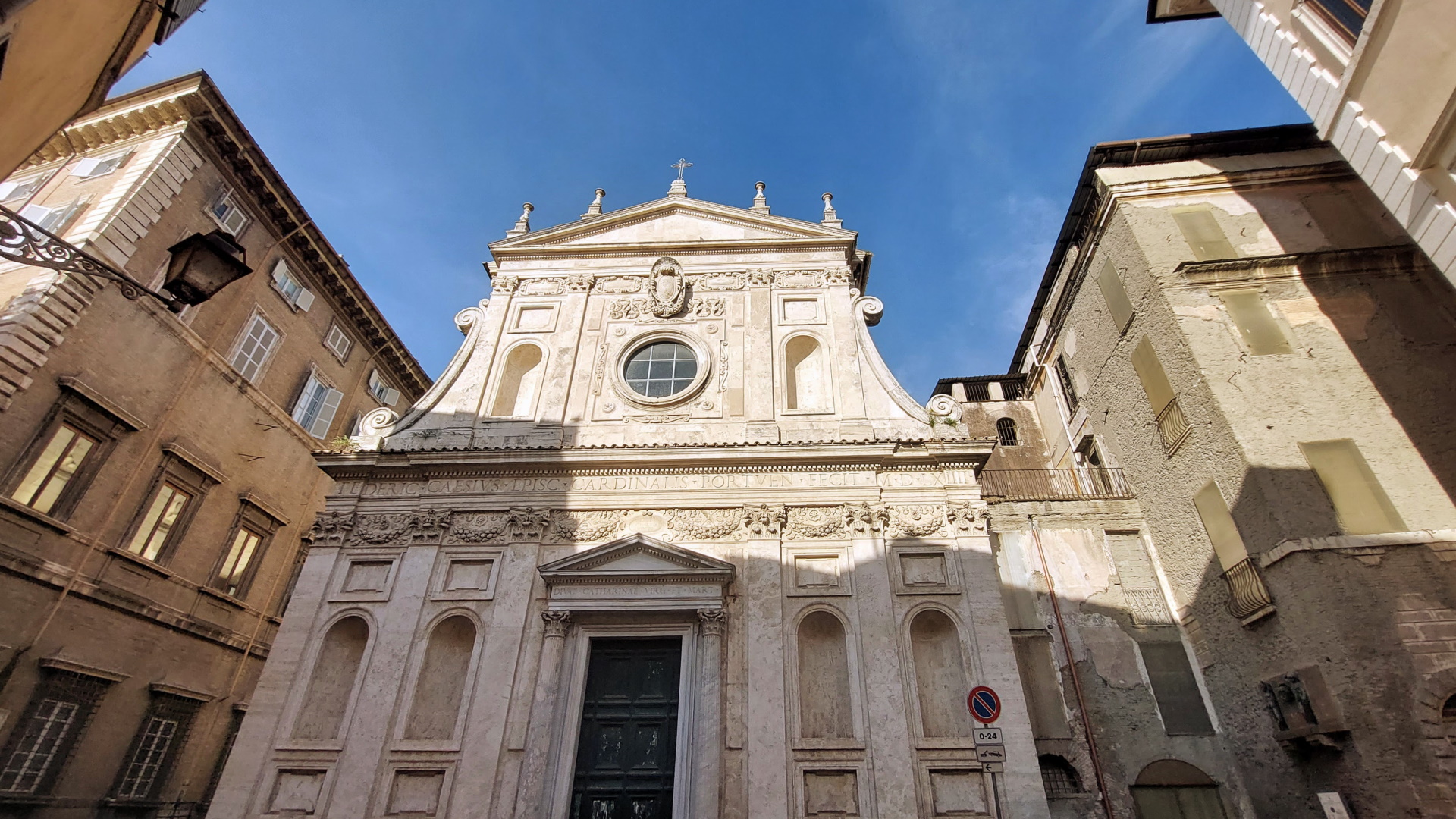
Nos encontramos en el Rione Sant'Angelo, una de las zonas que fue el corazón de la Roma medieval, y el nombre de la iglesia aún evoca a los cordeleros que ejercían su oficio en esta parte de la ciudad, aprovechando los espacios subterráneos de los edificios. A finales del siglo XII, cuando se menciona por primera vez en una bula papal de Celestino III, la iglesia aún se conocía como Santa Maria Dominae Rosae o Sancta Maria in castro aureo, porque se creía que se alzaba sobre las ruinas del Circo Flaminio, también conocido como Castrum Aureum.
En 1534, Pablo III cedió el edificio a San Ignacio de Loyola, quien fundó el Conservatorio de Santa Catalina de la Rosa, también conocido como la "Compañía de las Miserables Vírgenes en Peligro". Su propósito era brindar refugio a las hijas de cortesanas y mujeres de mala reputación o extrema pobreza, expuestas a peligros evidentes, para facilitar su matrimonio con hombres selectos o enviarlas a conventos. En 1560, cuando la Compañía se estableció como Cofradía, San Ignacio sugirió al cardenal Federico Cesi que la iglesia se reconstruyera y se dedicara a Santa Catalina de Alejandría. Guidetto Guidetti, discípulo de Miguel Ángel, fue el encargado de realizar la obra.
La hermosa fachada de dos niveles está adornada con un gran festón de frutas y guarda cierta similitud con la iglesia de Santo Spirito in Sassia, de la que se diferencia por su rica ornamentación. Una pequeña cúpula octogonal corona el campanario del singular campanario contemporáneo, construido sobre una torre medieval preexistente y claramente visible desde la Piazza Lovatelli. El interior, de elegante estilo renacentista tardío, presenta una sola nave abovedada y alberga notables obras de arte, como el retablo de Santa Margherita de Annibale Carracci en la Capilla Bombasi, el Deposición de Girolamo Muziano y el ciclo de frescos de las Historias de Santa Catalina de Federico Zuccari en la Capilla Cesi.
El monasterio contiguo que se encontraba detrás fue demolido en 1940 con planes de reconstruirlo. La zona permaneció abandonada hasta que importantes excavaciones arqueológicas descubrieron la Crypta Balbi, actualmente uno de los cuatro yacimientos del Museo Nacional Romano.
Informaciones
For the timetable of the masses and visiting conditions, please consult the contacts.
 Condividi
Condividi
Location
Para conocer todos los servicios de accesibilidad, visite la sección Roma accesible.











































